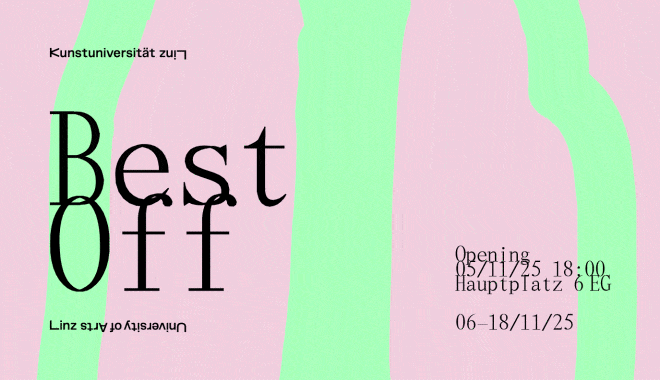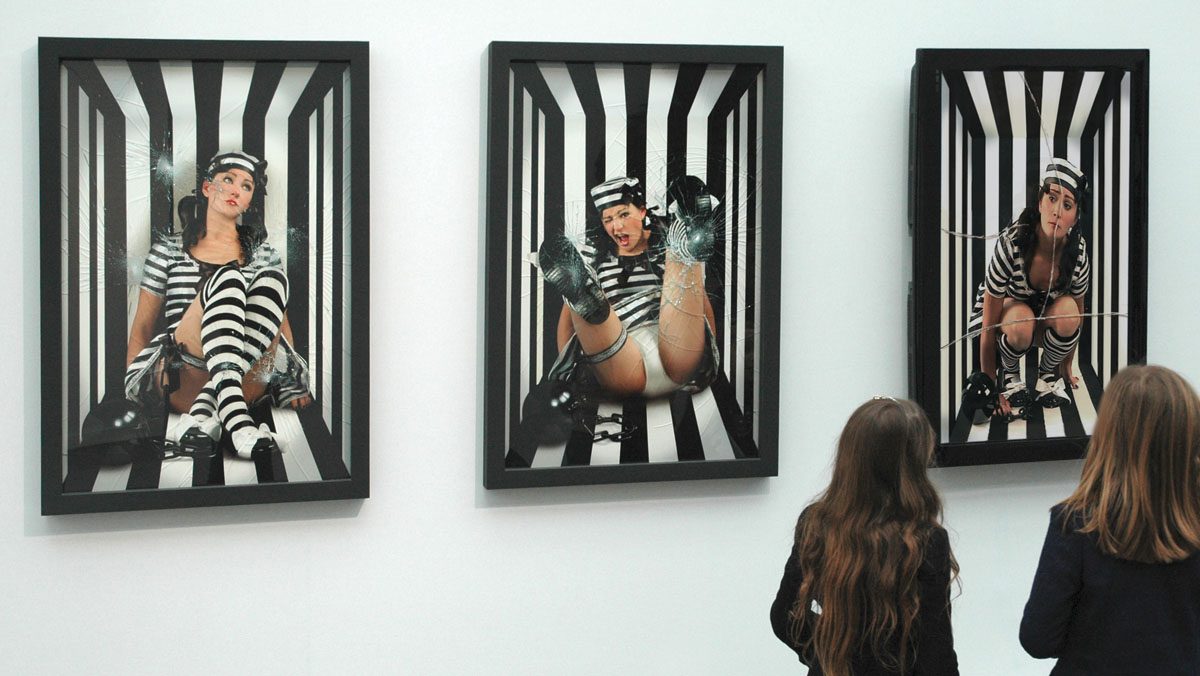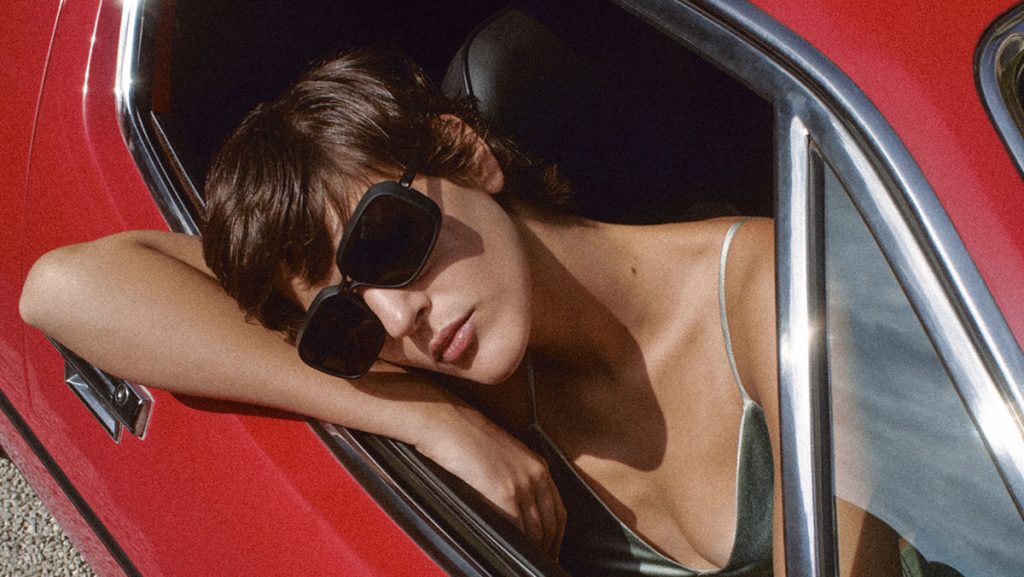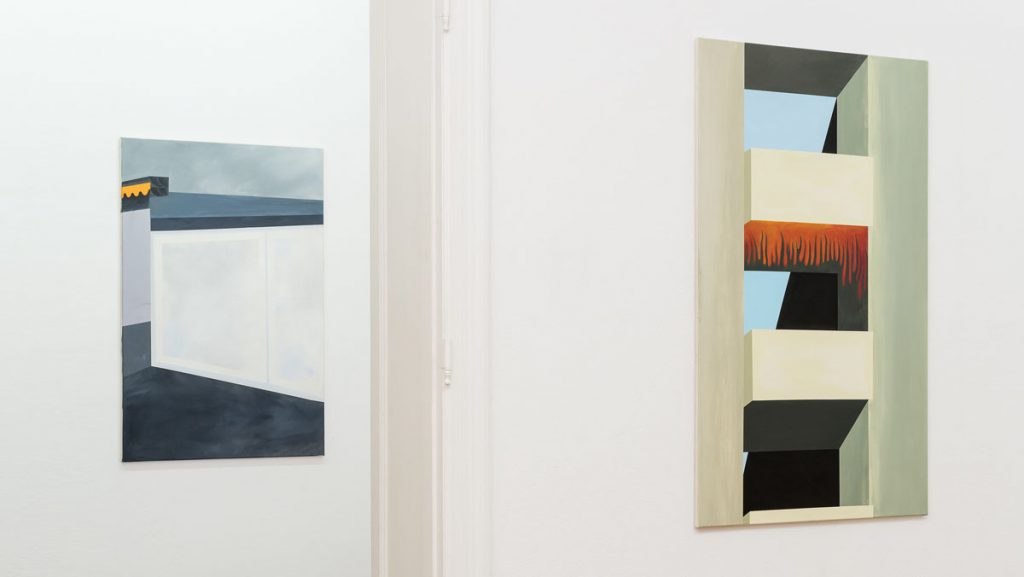Mary Sue is a double game, with a single player (the creature) who also acts as a referee (the creator) and as a favorite playground stereotypes, conventions, aberrations of the world, my own dysfunctions.
„Protean Artist and Living Fiction“ is written on your Instagram account. How do you describe your art?
My artwork is a perpetual back and forth between everything and its opposite, with as a point of balance, a middle ground overflowing with its extremes. Mary Sue, in good „fiction from reality“ is no exception. It can take all forms, go from adulthood to that of childhood, go from the femme fatale to the jug. It is the magnifying mirror of a „state“ and it can be translated in many ways.
I am not a videographer, even less an actress, not a photographer, not a painter and not a sculptor. The challenge is that „it“ can take all plastic forms with the systematic principle of dissecting who we are, of where we come from and where we go, naturally and culturally. If the chosen language is the right one, I do not impose any predefined style in the choice of mediums. This gives me great artistic freedom, the only rule being to be efficient. This multidisciplinarity obliges me to learn constantly, to keep an eye open on everything, to be in a state of perpetual alert.
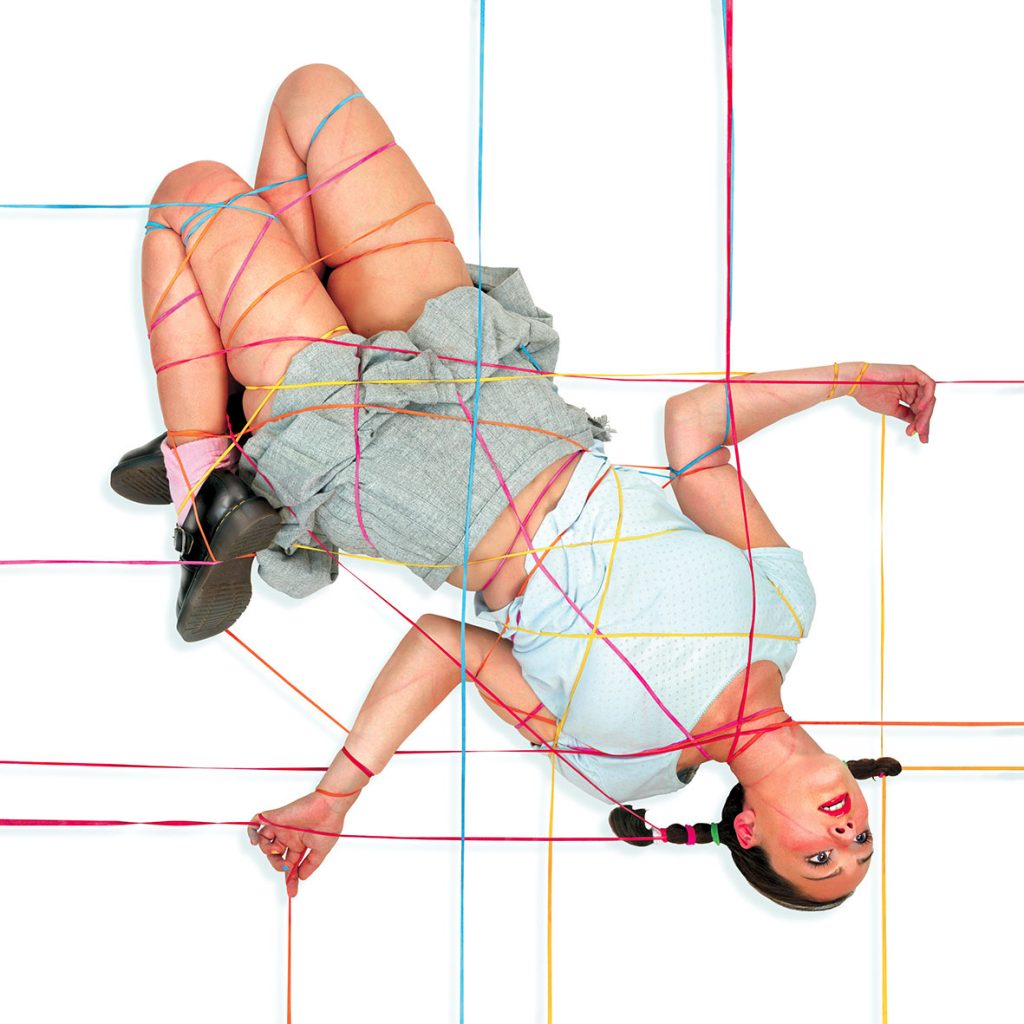
Describe your process. How do you select and find your topics?
There is always a first analytical phase. Starting from a „state“ that I draw from reality and which challenges me for good or bad reasons, I will dissect this thing coldly. From there, because I must have a slightly twisted mind, I try to read this thing from a point of view that could be opposed to mine. It doesn’t always work. This distancing exercise is a bit unnatural and schizophrenia. I must consider the work as a whole, from the dazzling idea to the precise hanging in the exhibition space. Then comes the production phase. I always start from very precise sketches, from millimeter shooting protocols. No choice, being in a self-fiction mode involves being in front and behind, inside and outside simultaneously. This requires rigorous preparation in composition and framing.
The videos always play with their support. The sculptures invade the space where they are placed and often take into account the history of the place. Photos formats reproducing a body halfway between an adult and a child size.
It is often there that Mary Sue, the creature, is released, in an enclosed space (the frame) from which she cannot leave. She then reveals the burden of the subject, without restraint, in a perfectly candid and natural way. It is the positive polarity of the subject. She intervenes to support and translate this thing head-on. It’s the bare part of the work, the time for recreation. The result is a „collage“ of control and freedom that produce a raw material, ready to be dosed, manipulated. This is the post-production phase. There, it is a question of concentrating more, of shedding a little to arrive precisely at an impossible form, at the same time esthetically very licked and a direction which often opposes it. This manipulation phase is essential. It allows me to cheat, to play with the subject, to blur the tracks. This is the moment when I have to put myself in the place of others, still working from a distance. Finally, it is the hanging of the work, its presentation in space that allows me to finish a work. This often takes the form of an installation in the exhibition space. The videos always play with their support. The sculptures invade the space where they are placed and often take into account the history of the place. Photos formats reproducing a body halfway between an adult and a child size.
You like black humor and confusing people with your art. What do people need to know about your art?
I talked about form, humor intervenes on the content. All the technical part is there to serve a purpose, a situation. Humor is a means that I find extremely effective in being able to tackle and support all subjects, even serious ones. It also forces me to go to my limits. Sometimes, I say to myself „no, there you exceed the limits“. Humor allows everything because it implies a distance, if it is dosed correctly, it is a formidable weapon.
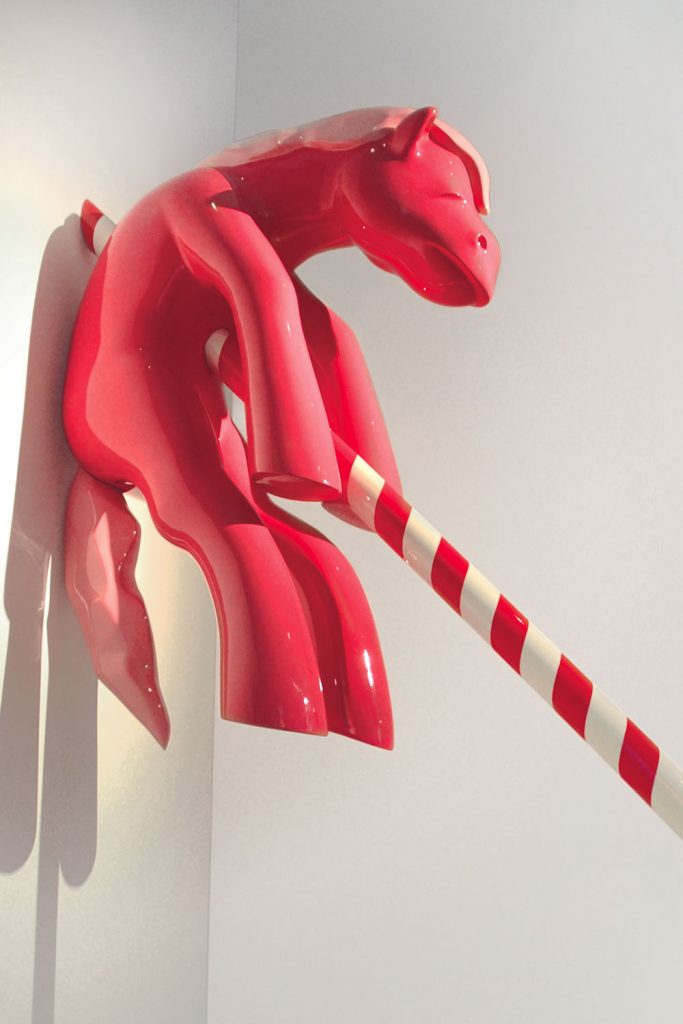
the mary sue project interview 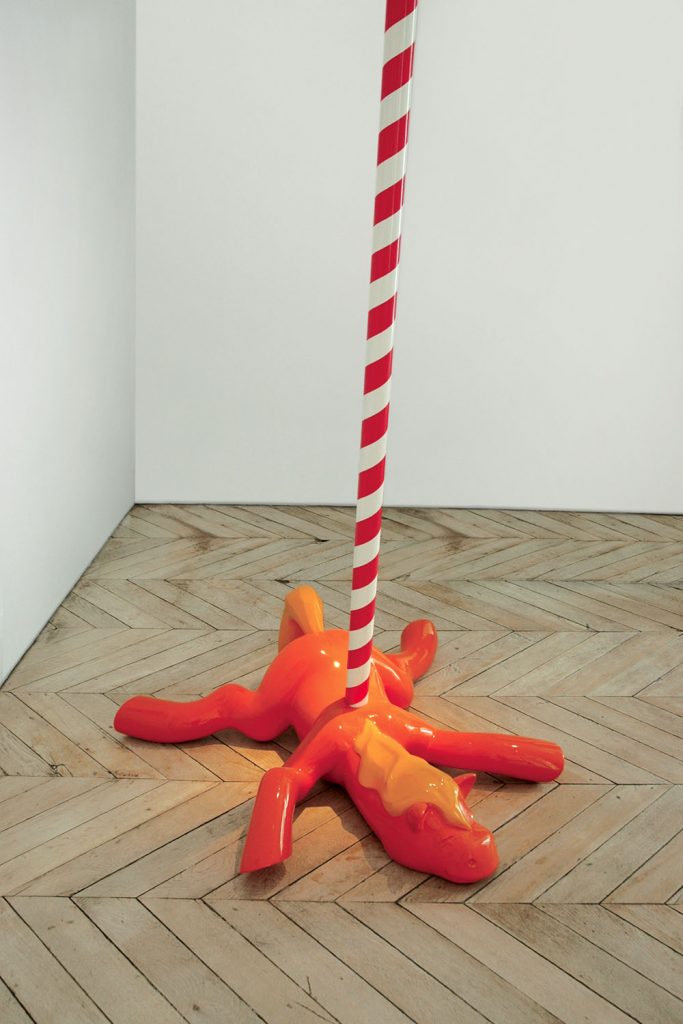
the mary sue project interview 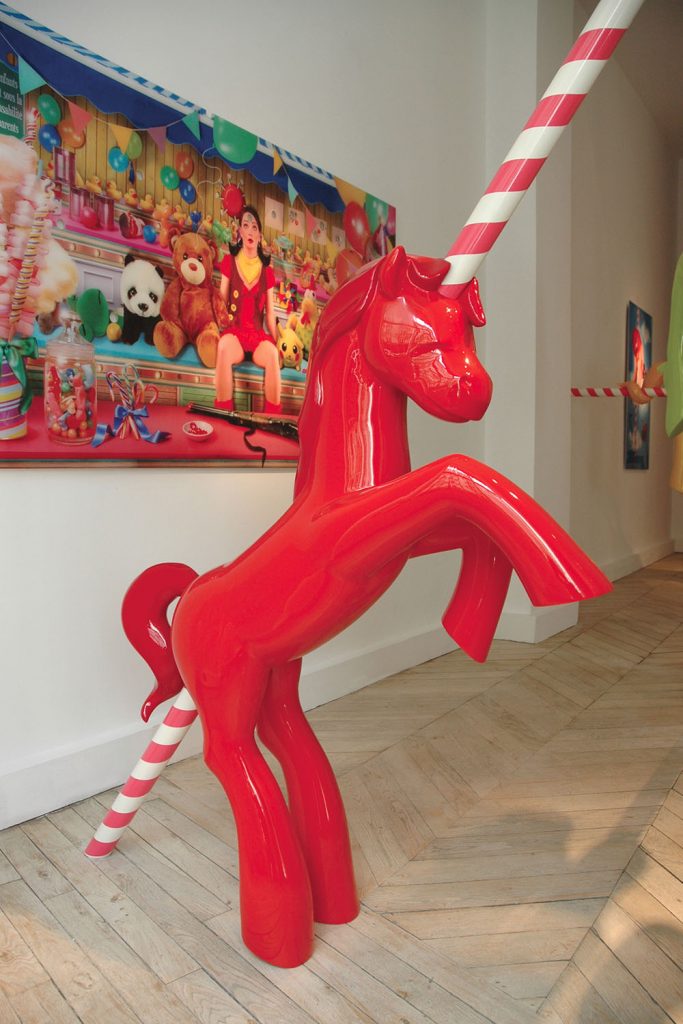
the mary sue project interview
A painter will tell you that black is not a color! In french, it is said literally „gallows humour“, that sets the tone! I try to reflect certain realities differently, from another angle. The character of Mary Sue, through her often youthful disbelief allows me to approach everything in this funny tone. The dark humor that emanates from it comes from the subject itself, coming from reality. It is the functioning of the world that brings this coloring, not me. I hide it behind bright colors that fix this reality. It’s a way old as the world! Advertising shimmer, a form of plastic demagoguery to get across what we could not accept if it was shown bluntly. I believe that incongruity also comes from this, from this camouflage, to better pass a pill that would be impossible to swallow if it were given alone, especially if it is poison. Finally, humor does not make sense if it remains focused on itself. It only exists and works in a social relationship. The installation in the exhibition space allows me to include the viewer in my game. The spectator who finds himself in front of a work, especially when it comes to video or installation is sometimes part integral to the work since it becomes a sort of out of scope to the work presented. He participates in it more or less passively. Humor is often revealed in these moments. It is an escape, a way to show that we are not fooled by what we see. Laughing is often used as an intellectually way out of a situation that we understand to be perilous. For me, this is the moment when I consider that I have accomplished my work. When the object no longer belongs to me intellectually, when the other appropriates it and brings it back to him. When the spectator recovers from what he sees a personal charge. It is the revelation of this intersubjectivity.
Alterity starts with oneself. Is Mary Sue the real artwork?
Mary Sue is a lonely animal. It is not in denunciation or pure criticism of the other, it is too easy not to take risks. And it doesn’t bring anything. Self-mockery is the basis of everything. First I laugh at myself and my weaknesses. I have talked a lot about the world and its faults, but it all starts here, inside you. There is a recurring and visible intimacy in Mary Sue, she comes from her education, from what built her, from her nature. You have to start from something that you are sure of, my raw material is me. But as I think we are all built on the same model, what it is necessarily or partially reflects what the other is.
What makes you happy?
We should rather ask the question to my other who is settled with little, but she went to play hide and seek all alone now. I apologize for it.
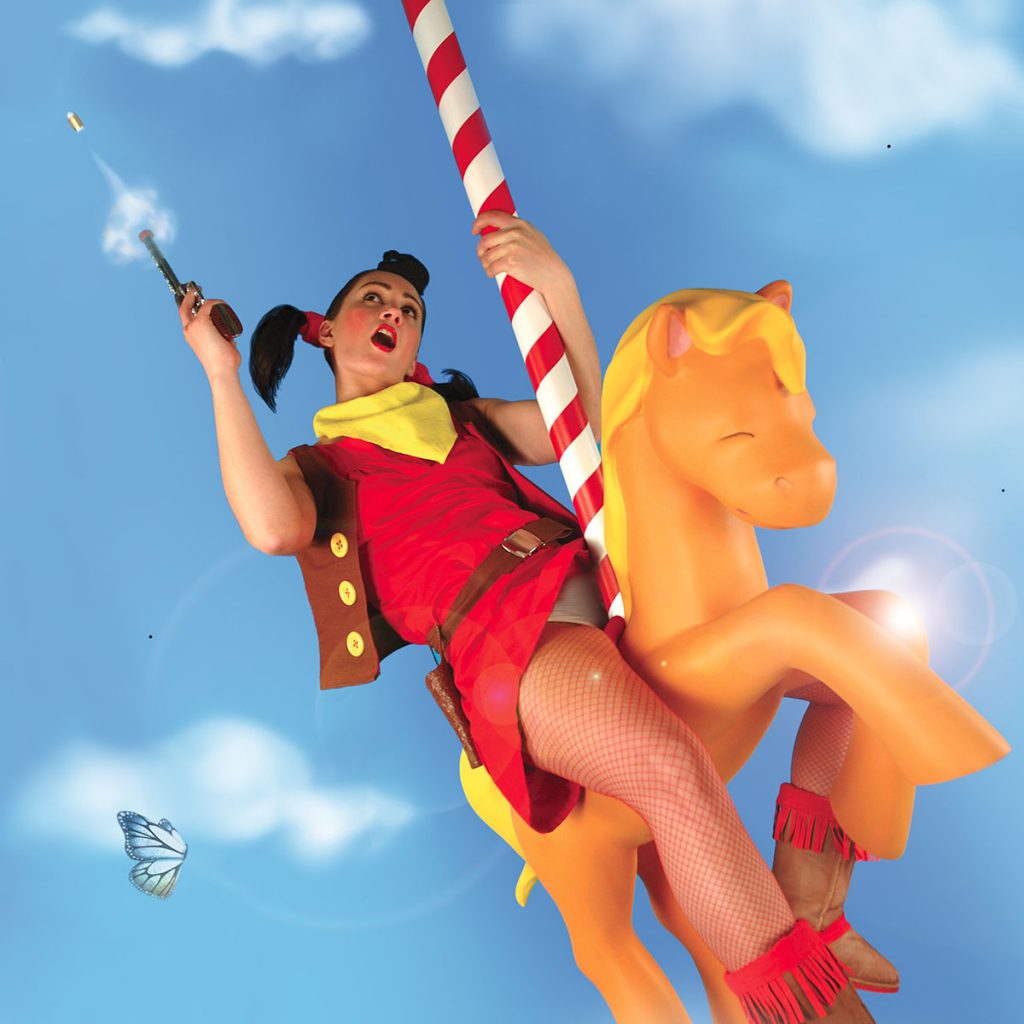
How do you spend your day right now? Do you have a regular schedule?
If you refer to containment, it doesn’t make much difference. One Mary Sue is camped behind spots and markings while the other tells her not to get out. She’s been training in confinement for years, she was even born in it. More seriously, artist life is a bit like that usually. Outside of exhibition and social times, the creative periods can be quite lonely for me. Not being able to go out has more of a psychological impact because in fact, it doesn’t change my habit a lot. Right now, I spend a lot of time looking at this completely transformed world. It’s impressive how quickly we can adapt to everything. Virtual platforms take an undeniable place and bring us the exterior of which we are deprived. The difference is in our ability to sort and digest these informations, because it has already passed through the prism of other people before it came to us. I can’t wait to see what will emerge from this global crisis, the worst as the best. It is a troubled and fascinating period at the same time.
Right now, I spend a lot of time looking at this completely transformed world. It’s impressive how quickly we can adapt to everything.



